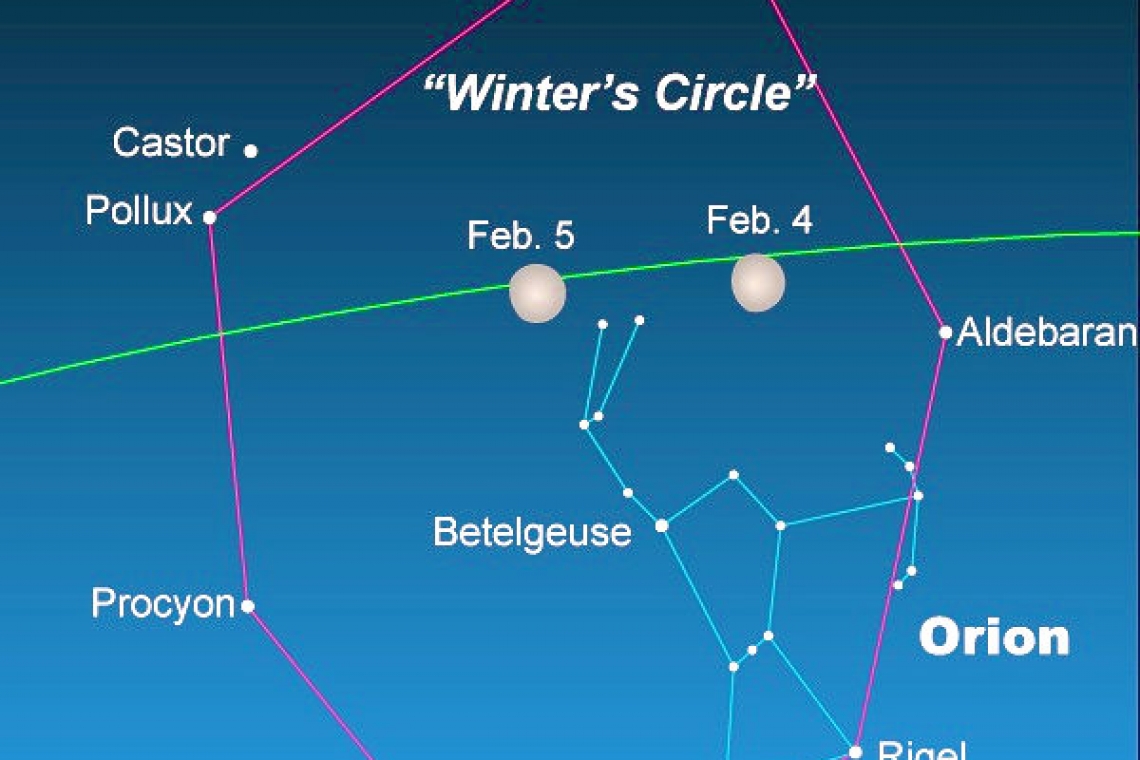~ St. Maarten’s Backyard Astronomy for February 1 & 2 ~
Sun rises at 6:45am
Sun sets at 6:06pm
Lunar phase: 2nd quarter, waxing gibbous
Moon rise: 11:41am, Saturday
Moon sets: 12:31pm, Sunday
The planet Mercury is currently visible after sunset, and will be for the next few weeks. February 2020 showcases a good evening apparition of Mercury at our latitude. Let's hope we get a break from the cloud cover and rain that has been dominating our skies of late, so we can gaze at the innermost planet.
If you do notice a clear western horizon, the direction of sunset, perch yourself on a porch or balcony, or walk or drive to a clear view, such as the top of a hill. Search first for the brilliant planet Venus, the third-brightest celestial body to light up the sky, after the sun and moon. People with good vision might spot Venus almost immediately after sunset, but us mere mortals may have to wait some 30 to 45 minutes after sundown to see the sky’s brightest planet.
As dusk deepens into darkness, look for Mercury to pop out beneath Venus. It will be close to the sunset point on the horizon. You might see Mercury with the eye alone an hour or so after sunset. With binoculars, you can spot Mercury (and Venus) even earlier. Mercury follows the sun beneath the horizon about one hour and 20 minutes after sundown. At Earth’s equator (0 degrees latitude), Mercury sets about one hour after the sun; and at temperate latitudes in the Southern Hemisphere, Mercury only stays out for about 45 minutes after sunset.
As we go into next week, the moon will shift across the celestial sphere. Monday night you'll see it close to the bright star Aldebaron, in the constellation Taurus the Bull. Aldebaran marks the tip of a V-shaped pattern of stars that represent the Bull’s face; it represents the eye of the Bull. Aldebaron is part of the Winter Circle of stars that span much of the night sky this time of year. By Tuesday and Wednesday nights, the moon will be inside the circle of the sky's brightest stars. Clouds, be gone! We want to stargaze!
Thank you for keeping up with the Night Sky articles. If you are out later on in the week, each star rises about four minutes earlier each day than written here, and the moon rises 50 minutes later. Night Sky is researched and compiled by Lisa Davis-Burnett. Earthsky.org is a key resource for information and images. Questions or comments? Email This email address is being protected from spambots. You need JavaScript enabled to view it.







